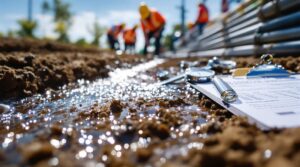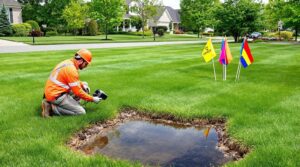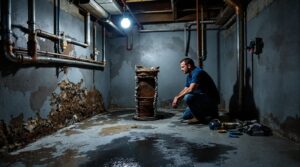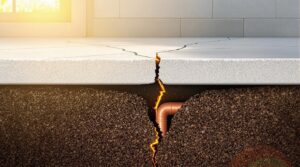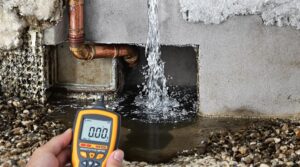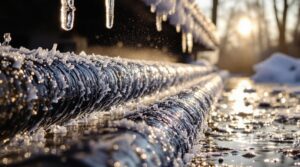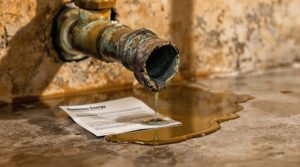The main water line typically enters a house through the foundation wall or concrete slab closest to the street-side municipal connection. Entry points are commonly found in basements, crawl spaces, or utility rooms near the front of the structure. In cold climates, the line penetrates below the frost line, while slab-on-grade homes often have entries near water heaters or kitchen fixtures. A water meter box at ground level and visible pipes can help trace the main line's path. Professional assessment may reveal additional placement considerations based on local building codes.
Key Takeaways
- Main water lines typically enter through the front foundation wall of the basement or crawl space, closest to the street.
- In homes with slab foundations, the main water line enters through the concrete floor, often near water heaters or kitchens.
- The entry point is usually marked by a main shut-off valve inside the house where the line first penetrates the structure.
- Water meters located in ground-level boxes near the street indicate the general direction from which the main line approaches.
- In cold climates, water lines enter below the frost line through the foundation to prevent freezing.
Common Entry Points and What to Look For
When locating a home's main water line entry point, homeowners should first check the basement or crawlspace area near the front foundation wall facing the street. This location typically provides the most direct route from the municipal water supply to the home's plumbing system.
In homes without basements, particularly those with slab-on-grade construction, the main water line often enters through the concrete floor. Common access points include areas near water heaters or beneath kitchen sinks. Utility rooms and garages frequently house these entry points, especially in warmer climates where water supply lines run underground.
To identify the entry point, homeowners can trace visible water pipes from the outdoor water meter toward the house. Since entry points may be concealed behind finished walls, checking access panels and following the path of visible water pipes can help locate the main connection.
Understanding these typical entry configurations assists in maintenance, repairs, and emergency situations requiring water shutoff.
Locating Your Main Water Line From the Street
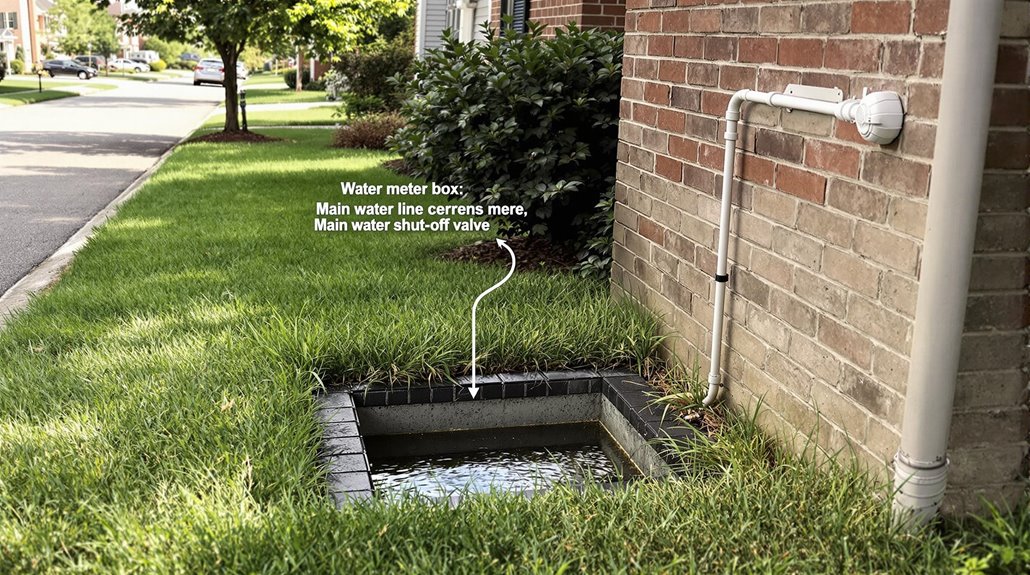
Tracing a residential main water line from the street requires understanding the standard infrastructure layout of municipal water systems. The water supply line typically extends from the property line to the exterior wall, following the shortest possible route to minimize installation costs and potential maintenance issues.
| Location | Primary Indicator | Secondary Indicator |
|---|---|---|
| Street | Water Meter Box | Utility Markings |
| Property Line | Service Connection | Cleanout Access |
| House Entry | Main Water Shut-off Valve | Foundation Penetration |
To find the water main, homeowners should first locate the water meter, which is usually housed in a ground-level box near the street. From there, the supply line generally runs perpendicular to the house, entering at a point closest to the street-facing foundation wall. The main water shut-off valve is typically positioned inside the house near this entry point, often in basements or crawl spaces. In regions with freezing temperatures, the line enters below the frost line through the foundation wall.
Building Construction Types and Water Line Placement
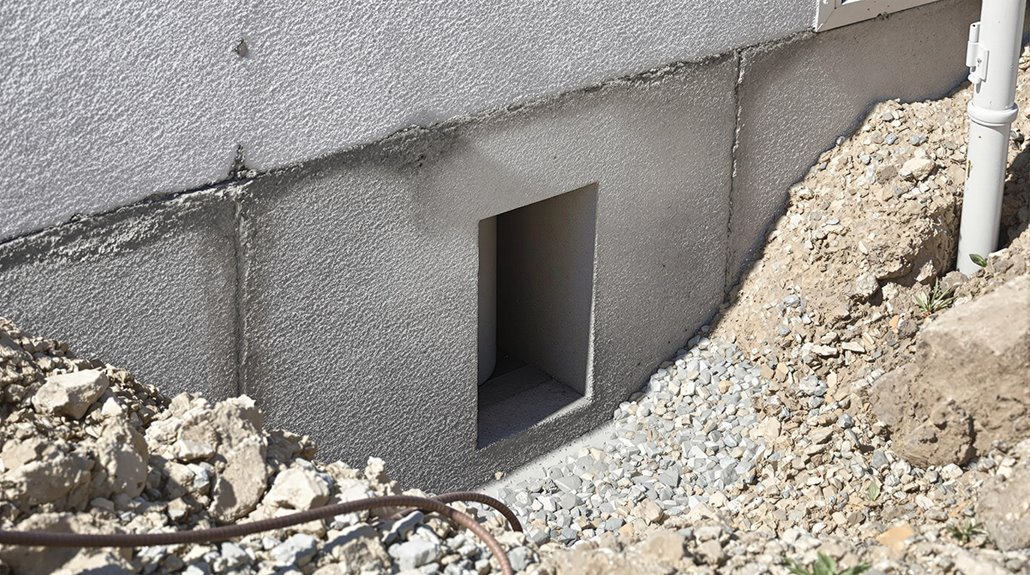
The design and configuration of a building's foundation system directly determines where the main water line enters the structure. In homes with basements, the water supply line typically penetrates the foundation wall near the street side, providing efficient access for maintenance and repairs.
Slab-on-grade construction presents a different configuration, where the main water line enters through the concrete slab floor. These entry points are strategically positioned near essential fixtures, such as water heaters or kitchen plumbing, to minimize pipe runs and maximize efficiency.
Buildings with crawl spaces feature water line entries that align with the crawl space access points, facilitating maintenance while protecting the pipe from exposure.
Local regulations govern specific requirements for water line placement, including minimum depths, clearances from other utilities, and installation methods. These requirements promote both safety and accessibility, while maintaining the structural integrity of the foundation across all construction types.
Signs and Indicators of Water Main Location
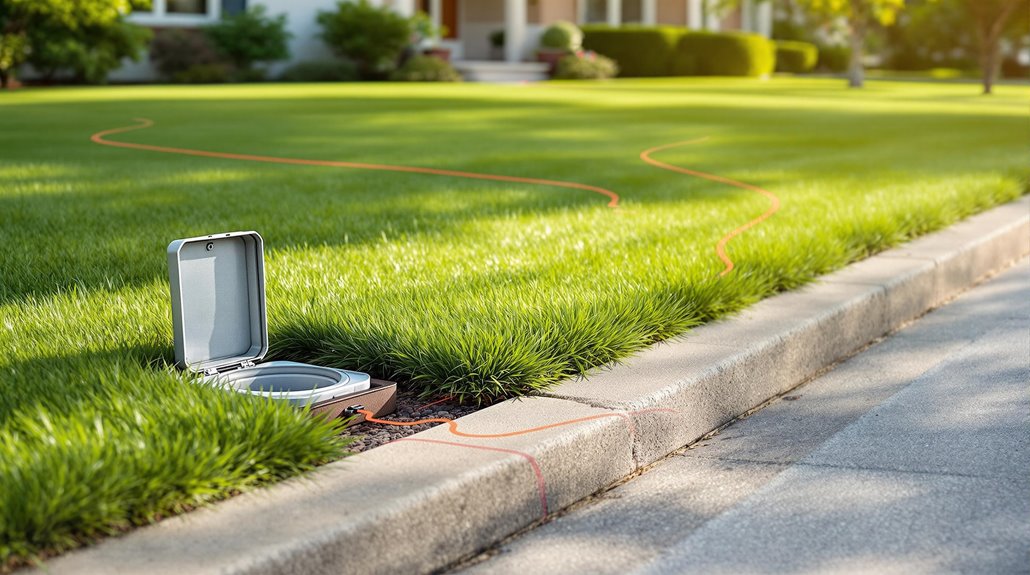
Locating a home's main water line entry point involves recognizing several key visual indicators both inside and outside the structure. Professional plumbers identify the main shut-off valve location by examining specific markers and conducting systematic visual inspections. The presence of a water meter near the street often aligns with the path of the main water line into the foundation wall.
| Location | Primary Indicators | Secondary Indicators |
|---|---|---|
| Exterior | Water meter box | Buried utility marks |
| Foundation | Wall penetration | Frost protection depth |
| Basement | Main shut-off valve | Cold water supply line |
| Interior | Water heater proximity | Plumbing fixture layout |
In slab-on-grade construction, the main water line typically enters near essential plumbing fixtures like water heaters or beneath kitchen installations. Understanding these entry points is fundamental for maintenance access and emergency situations. Homeowners should familiarize themselves with their specific configuration by tracing the cold water supply line from visible plumbing fixtures back to its origin point.
Essential Tools and Methods for Line Detection
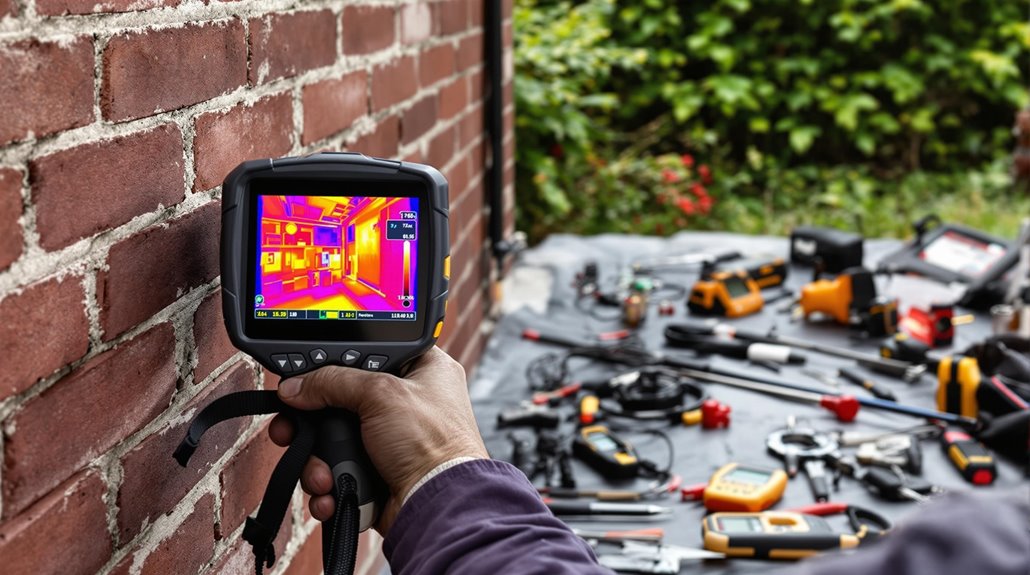
Professional detection of main water line entry points requires specialized equipment and systematic methodology to guarantee accurate results without damaging property.
Modern tools like stud finders and metal detectors enable technicians to trace water supply lines through walls with minimal invasive exploration.
The detection process typically begins at the water meter, following the flow path toward the house to identify potential entry routes. Thermal cameras prove particularly effective for locating hot water pipes in insulated walls, especially in colder climates where temperature differentials are more pronounced.
For thorough underground line detection, utility services can provide specialized equipment and expertise to map the main water line while avoiding conflicts with other buried utilities.
Thorough exploration should include checking for concealed valves in recently renovated areas, as older homes may have modifications that altered the original configuration of water line entry points.
The Benefits Of Consulting A Public Adjuster
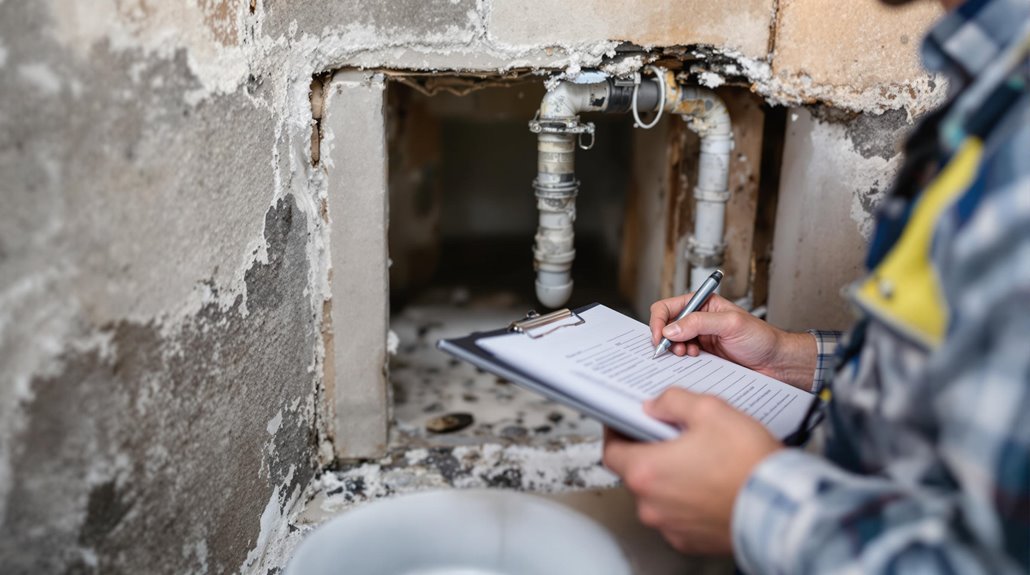
When dealing with water line issues and resulting property damage, consulting a licensed public adjuster provides critical expertise in managing complex insurance claims while ensuring objective damage assessment documentation.
Public adjusters streamline the claims process through professional policy interpretation, detailed damage documentation, and skilled negotiation with insurance carriers.
Statistical evidence indicates markedly higher claim settlements for property owners who engage public adjusters, with studies showing increases up to 800% compared to unrepresented claims.
Expertise In Insurance Claims
Insurance claims involving main water line damage can benefit substantially from the expertise of a public adjuster. When issues arise with the main water shut-off valves or water pressure problems occur, these licensed professionals understand how to document and assess damage to guarantee proper compensation.
Their knowledge extends to evaluating water flow disruptions, meter box complications, and related home improvement needs that may arise from water line failures. Public adjusters possess thorough understanding of insurance policies specific to home water systems and can effectively negotiate with insurers to guarantee all eligible damages are covered.
Their expertise helps expedite claims processing while managing documentation of affected parts of the water system. This professional guidance proves particularly valuable when dealing with complex shutoff valve issues near the property entrance, potentially leading to higher settlement amounts for homeowners.
Objective Damage Assessment
Objective assessment of water line damage requires the specialized expertise of a public adjuster to accurately evaluate and document property losses.
These licensed professionals conduct thorough evaluations to guarantee fair settlements for property damage claims, providing detailed documentation that supports maximum insurance coverage.
- Public adjusters perform extensive inspections to identify both visible and hidden water damage, often discovering issues that property owners might overlook.
- Professional assessment techniques help establish accurate damage reports, leading to 30-50% higher payouts compared to self-managed claims.
- Technical expertise enables adjusters to navigate claim processes effectively, interpreting complex insurance policies to identify all applicable coverage options.
Their objective damage assessment approach combines industry knowledge with systematic evaluation methods, assuring policyholders receive appropriate compensation for water line-related damages while maintaining compliance with insurance requirements and building codes.
Streamlined Claim Process
Beyond the initial damage evaluation, engaging a public adjuster creates significant advantages in expediting the claims process for water line damages.
When issues with the main water supply line or water pipes located inside the home require insurance intervention, public adjusters streamline documentation and negotiations. Their expertise in finding hidden policy benefits guarantees thorough coverage for water flow disruptions and associated damages to the wall closest to the entry point.
It's essential to know that public adjusters handle all administrative aspects, from documenting shut-off valve locations to evaluating damage to a home's water distribution system.
Their percentage-based compensation model aligns with homeowners' interests, often resulting in higher settlement values. This professional support allows property owners to focus on restoration while guaranteeing maximum coverage utilization and proper claim documentation.
Higher Claim Payouts & Settlements
Securing ideal financial recovery for water line damages often requires professional expertise, which explains why public adjusters consistently achieve higher claim settlements for homeowners.
When dealing with incoming water damage, these licensed professionals leverage their extensive knowledge of insurance policies and property damage assessment to maximize compensation.
- Public adjusters typically increase claim settlements by 20-50% through thorough documentation of water damage and identification of often-overlooked issues near the main water line and shutoff valve.
- Their expertise guarantees detailed evaluation of both visible and hidden damages, leading to more accurate claim assessments.
- Professional adjusters handle complex negotiations with insurance companies while homeowners focus on essential tasks like coordinating repairs and managing temporary water turn off procedures.
The strategic involvement of public adjusters often results in markedly higher payouts compared to self-negotiated settlements.
About The Public Claims Adjusters Network (PCAN)
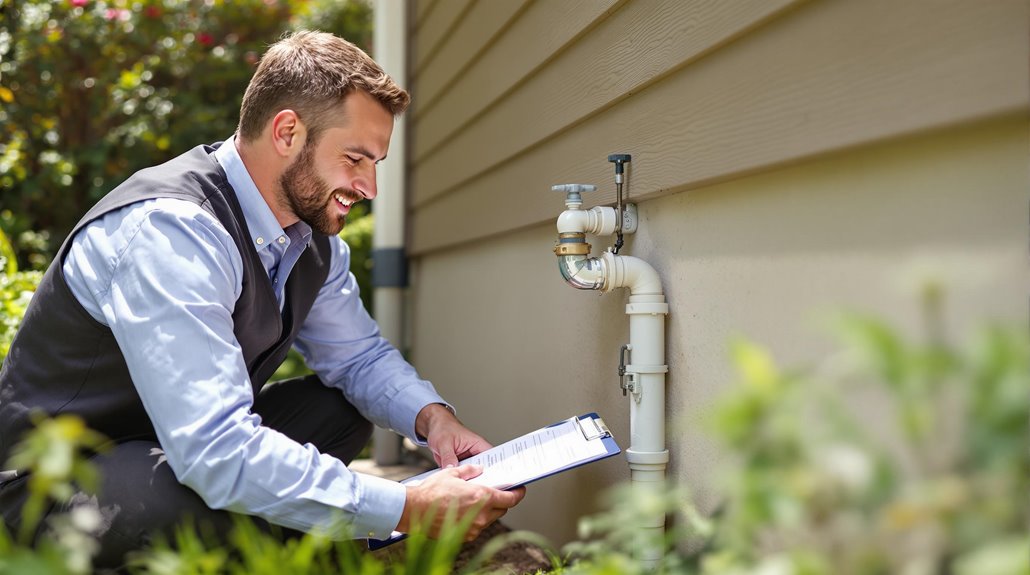
The Public Claims Adjusters Network (PCAN) operates as a nationwide organization of thoroughly vetted, state-licensed public adjusters who handle residential and commercial property damage insurance claims.
This professional network maintains coverage across 40+ states and encompasses expertise in over 30 distinct claim categories.
PCAN serves as an essential intermediary, connecting policyholders with expert public adjusters who have demonstrated exceptional competence in their field. Member adjusters must complete a rigorous application and interview process to gain admission into the network.
The organization enforces strict standards through mandatory annual audits of licenses and complaint records.
All network members must consistently demonstrate the highest levels of ethics, morals, and professional conduct.
PCAN's pre-vetted adjusters represent the industry's elite practitioners, ensuring policyholders receive superior representation when maneuvering through complex insurance claims processes.
This systematic approach maintains quality control while facilitating access to top-tier public adjusting services nationwide.
Frequently Asked Questions
Where Does My Water Line Come Into the House?
Water lines typically enter through the foundation wall or slab nearest to the street, commonly located in basements, crawl spaces, or near water heaters in slab-grade construction.
Does the Main Water Line Go to the Water Heater First?
Like a river's tributaries, the main water line typically branches throughout the house before reaching the water heater, ensuring proper water pressure distribution and ideal flow to all household fixtures.
What Does the Main Water Line Connect To?
The main water line connects to pressure regulation valves, backflow prevention devices, and the home’s water distribution system, which branches into various household fixtures through the internal plumbing infrastructure. These components work together to ensure that water flows safely and efficiently throughout the home. In case of leaks or pressure issues, homeowners may need to learn how to fix main water line problems to prevent water damage. Regular maintenance and inspections can help identify potential issues before they escalate, ensuring a reliable water supply.
Where Is My Main Water Valve in My House?
The main water valve is typically located in basements, crawl spaces, or near exterior walls where plumbing enters, often beside water meters. Common types include gate valves and lever-operated ball valves.
